PURPOSE: This service bulletin will explain TECH’s recommended practices for installing and positioning repair units in radial truck tires with shoulder or upper sidewall injuries. Today’s radial truck tires have been engineered to provide better fuel economy, less rolling resistance and longer life. In turn, TECH has developed new repair units and has adopted new installation procedures in order to repair these tires, thus achieving the best results.
Due to the high flex characteristics and increased heat buildup in the upper sidewall and shoulder areas of today’s radial truck tires, additional precautions should be taken in order to properly repair punctures in the shoulder area. The use of a standard puncture repair unit in the shoulder (S-T) area will result in the repair unit being exposed to more stress in the upper sidewall, due to the characteristics of the tire. This could potentially result in a premature repair failure.
The repair unit selected for these injuries may need to be longer and/or offset over the injury to get the ends of the fabric reinforcement plies out of the high flex area of the upper sidewall. The S-T area measures 1.5” (40mm) in from the tread edge on truck tires. (See fig. 1)
When selecting a repair unit for use in the S-T area, the repair must end outside of the flex area. To achieve this placement, the repair unit oftentimes will be required to shift toward the bead to get the fabric plies beyond the midpoint of the sidewall. Due to the shorter length of a standard Centech Radial Nailhole Repair Unit, these repairs will not extend beyond this high flex area. In order to get the repair unit beyond the high flex area, a longer Centech Reinforced Shoulder Repair (RSR) Unit should be used. The CT-24 should be used to repair injuries in medium truck tires up to 5/16” (8mm) after preparation. In heavy truck tires, 12.00R, 315/80, 445/50, etc., an RSR-26 should be used because of the larger flex area.
When using an RSR in the shoulder, the end of the repair unit may still be positioned in the high flex area when centered over the injury. To avoid this, the repair unit may be shifted up to 25% of its length in the bead-to-bead direction. This will ensure the fabric ends of the repair unit extend beyond the high flex area and still offer sufficient reinforcement over the injury.
In order to allow for proper placement of the repair unit, it is recommended to use the appropriate TECH repair template for the repair unit being used. TECH’s redesigned templates have a window on them that will allow the technician to see the injury and properly place the repair unit over the injury. The window in the template also shows the distance in which the repair unit may be shifted in order to position the ends of the repair unit outside of the high flex area of the sidewall. When shifted in either direction, the injury must fall completely within the window for the repair unit to properly reinforce the injury while still ending outside of the high flex area.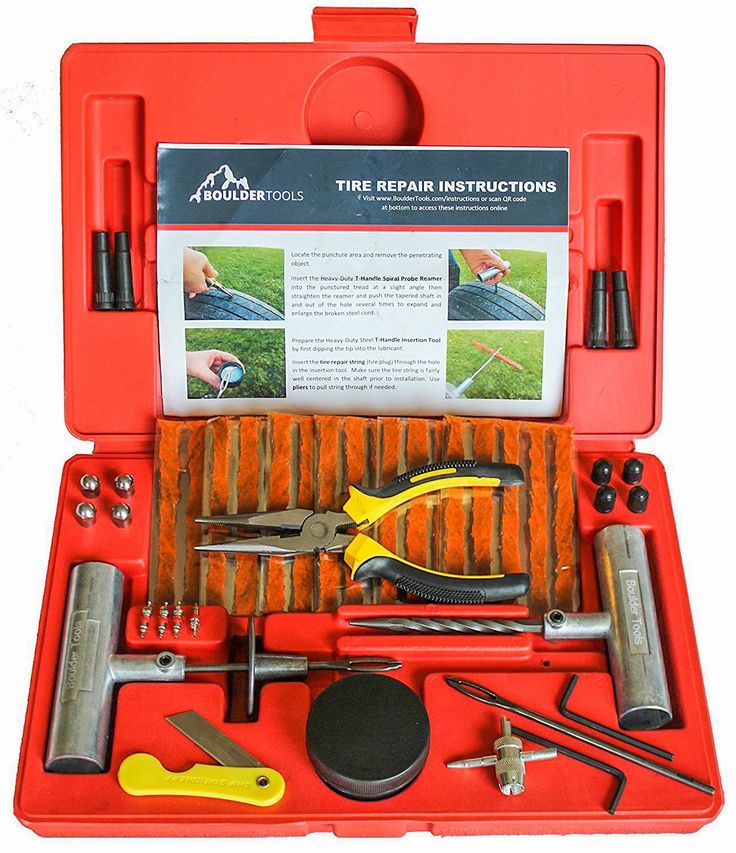 (See fig. 2)
(See fig. 2)
For step-by-step procedures on performing a proper repair in a radial truck tire, refer to TECH Repair Manual RM-5, “Two-Piece Repair Method for Passenger, Light Truck and Truck Tires.”
Repair Template Incorrect Placement Before OffsetRepair Template Correct Placement After Offset(Repair Unit Reinforcement End Completely Out of Flex Area)
Driving on Virginia roads is not without hazards. There are plenty of nails, screws, and other debris that can make its way into a tire, ruining your day. For quick, hassle-free tire repair, bring your vehicle to Virginia Tire & Auto of Centreville.
Tire Repair at Virginia Tire & Auto of CentrevilleWhether your tire is completely deflated or just has a slow leak, the tire experts at Virginia Tire & Auto of Centreville can handle it! Our skilled technicians will use the latest tools and techniques to fix your tire and get you back on the road quickly.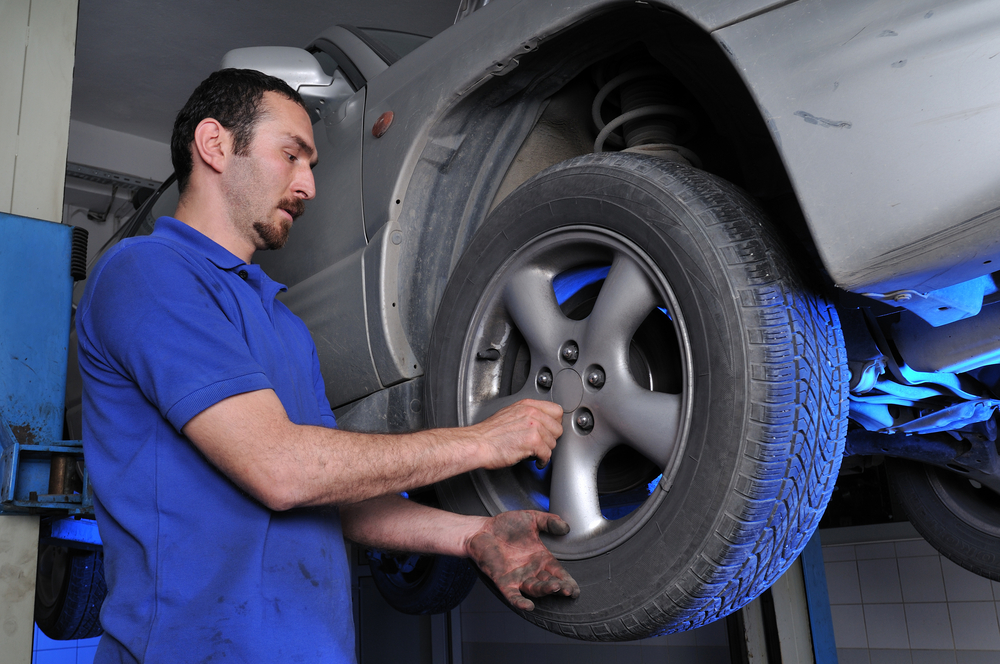
|
Tire Repair Service at Virginia Tire & Auto of Centreville includes:
A B
+
+
+
A
A
The TIA defines the acceptable puncture repair area as the “crown” of the tire, approximately 1–1.5 inches in from each tire shoulder.
Patching a tire from the inside is the only safe way to repair a tire. String plugs are a temporary and unsafe repair, and they are not recommended by the TIA.
String plugs are a temporary and unsafe repair, and they are not recommended by the TIA.
B
B
A puncture outside the crown, either in the shoulder or the sidewall, can damage the belts and cables in the tire and compromise the tire’s structural integrity.
If a tire is punctured outside the crown area, then the tire should be replaced.
Virginia Tire & Auto follows the Tire Industry Association’s (TIA) puncture repair standards.
Why choose Virginia Tire & Auto of Centreville for tire repair?If you find yourself with a flat or leaky tire, the technicians at Virginia Tire & Auto of Centreville will use the latest industry techniques to repair your tire and get you back on the road as quickly as possible.
Flat or damaged tires can affect the alignment, steering, and suspension of your car.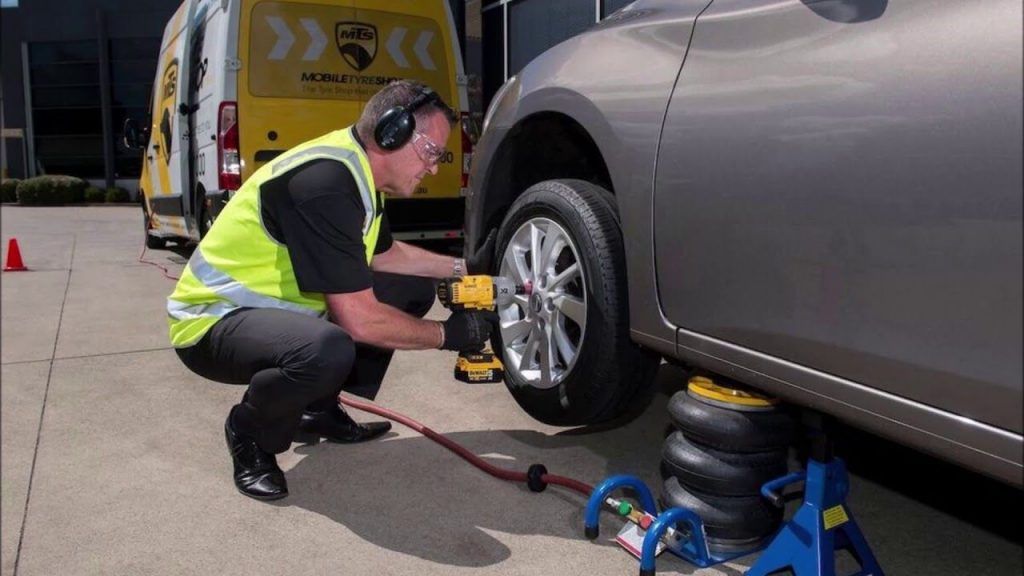 At Virginia Tire & Auto of Centreville, we assess your vehicle to make sure there isn’t any additional hidden damage caused by your flat tire. Our tire repair experts will make sure you always have a safe ride home.
At Virginia Tire & Auto of Centreville, we assess your vehicle to make sure there isn’t any additional hidden damage caused by your flat tire. Our tire repair experts will make sure you always have a safe ride home.
Virginia Tire & Auto of Centreville is a one-stop shop for all your car needs. Drop by our Centreville, VA, location for your tire repair service or schedule an appointment online today!
We service all major automotive brands including Acura, Audi, BMW, Buick, Cadillac, Chevrolet, Chrysler, Dodge, Fiat, Ford, GMC, Honda, Hyundai, Infiniti, Jaguar, Jeep, Kia, Land Rover, Lexus, Lincoln, Mazda, Mercedes, Mitsubishi, Nissan, Porsche, RAM, Subaru, Toyota, Volkswagen and Volvo.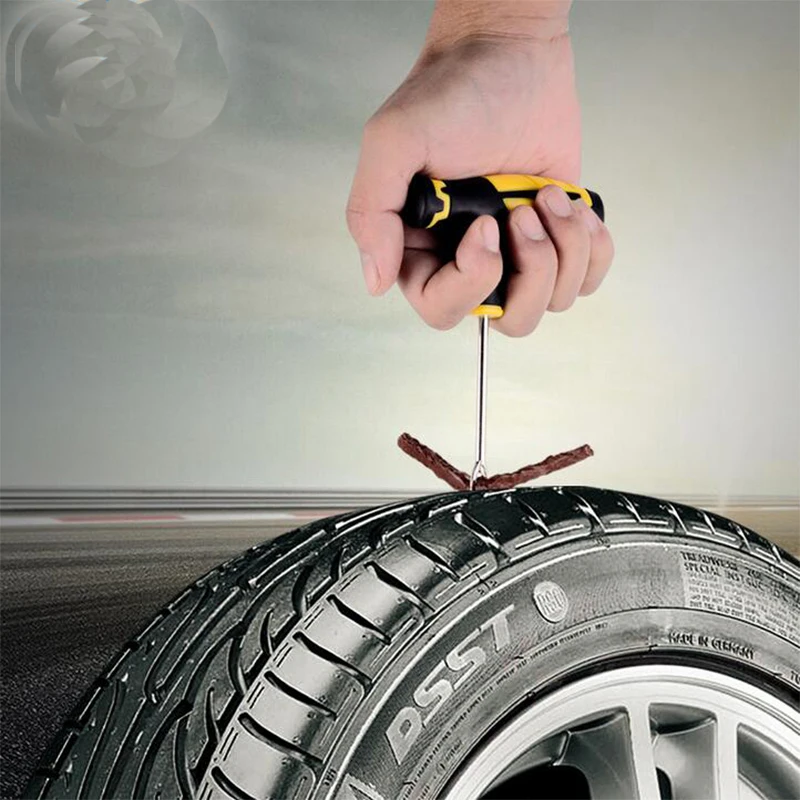
We’re 100% committed to making sure you’re 100% satisfied. We’ve spent more than 40 years doing things the right way, and that’s why it’s part of our culture to make sure you’re in the most friendly, comfortable and honest environment possible. And it’s also why our warranty not only covers all our services but will also be honored at all our locations, too.
Is your tire damaged beyond repair? Find out your replacement options and when you need to replace one, two or all four tires.
Make sure you check these items off your tire care to-do list to maximize your tires' lifespan.
According to history, one day in 1888, an English veterinarian and cyclist, John Dunlop, tired of shaking through the countryside of Britain on molded rubber tires, glued a piece of water hose with a ring and pumped it up with a football pump - this is how the first pneumatic tire appeared.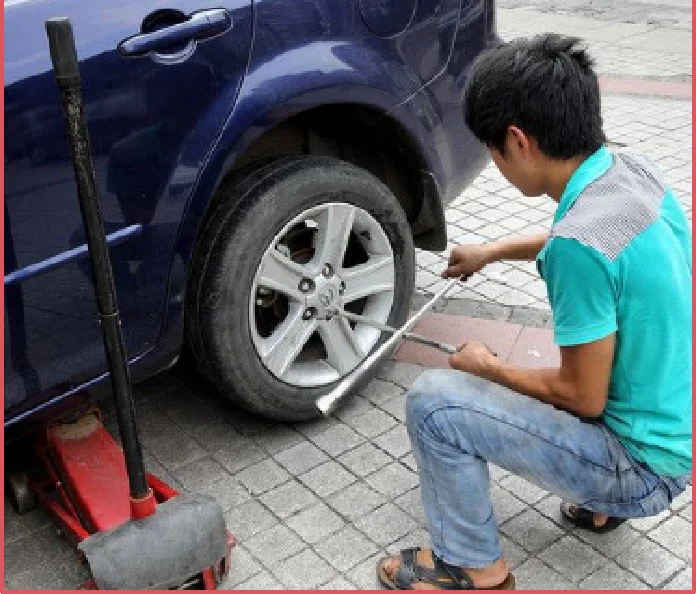
History is silent when it was pierced for the first time - but most likely it happened in the same year. So the need for tire repair appeared simultaneously with their appearance.
Puncture required cut with burrOver the past 124 years, tire repair technology has been brought to almost perfection. For several decades (after tubeless tires in the vast majority have given way to tubeless ones), the procedure for repair has practically not changed.
This procedure is outwardly quite simple - and car owners (as well as part of the workshop workers offering this service) have the false impression that it is not particularly important to follow the prescribed technology exactly - they say, "it will do." And many "specialists" do not really know the technology. And therefore they sincerely believe: why do we need all sorts of "extra" actions? Why take the tire off the rim when you can keep the wheel off the car at all? The client is in a hurry - so you can plug a puncture (and a cut) with a cord, as they say, “on the go”.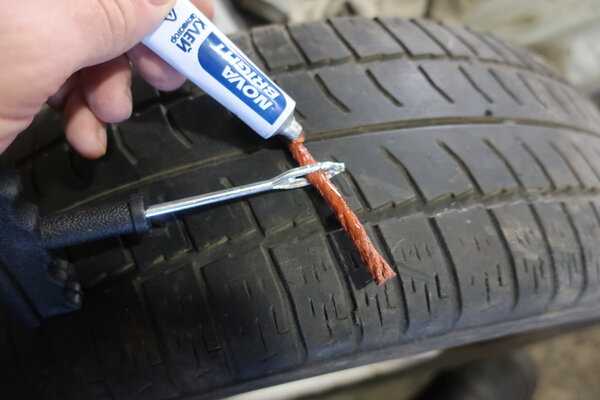 Does not poison the air, and everyone is happy. By the way, some workshops that promise “repair of punctures and cuts” do not have anything at all, except for cords and an awl for their installation.
Does not poison the air, and everyone is happy. By the way, some workshops that promise “repair of punctures and cuts” do not have anything at all, except for cords and an awl for their installation.
In fact, each stage of tire repair technology is, as they say, "written in blood" - like military regulations and safety instructions. And this is not an exaggeration: what threatens a sudden rupture of a wheel at speed is not worth saying - if people do not die, then they are very lucky ...
We asked our expert, one of the heads of the Russian representative office of the German company "REMA TIP-TOP GmbH" Alexander Akhapkin, to talk about tire repair technology and those common mistakes (or even outright hack work) that car owners have to face.
- Tire repair, in general, comes down to a simple and understandable action: you need to plug the resulting "hole" in it. It sounds simple - like the instructions for skydiving: stepped out of the plane and pulled the ring.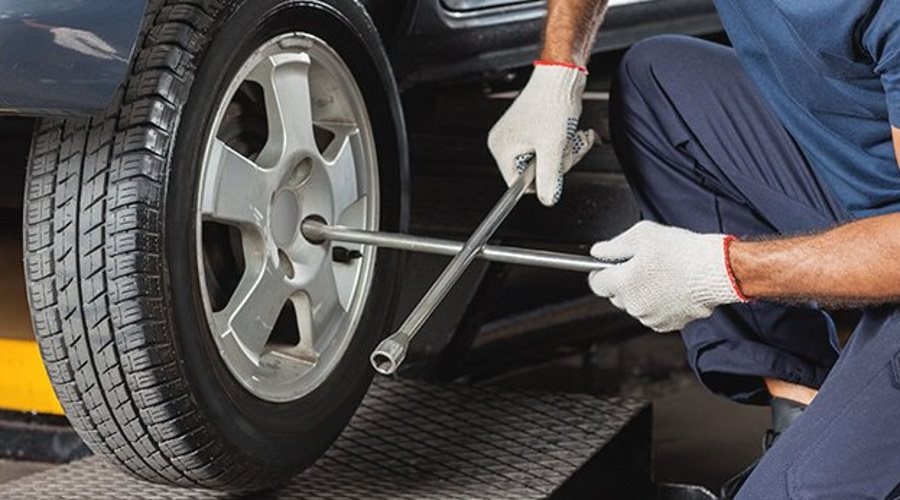 Only now, no one jumps with a homemade parachute, especially one packed according to rumors and advice from neighbors. Although the consequences of such a jump and improper tire repair are quite comparable.
Only now, no one jumps with a homemade parachute, especially one packed according to rumors and advice from neighbors. Although the consequences of such a jump and improper tire repair are quite comparable.
So let's go in order: how to do it!
So, the first step: determine the type of damage - is it a puncture or a cut?
The difference, of course, is in size. Roughly speaking, if no more than 1-2 cord threads are damaged, then this is a puncture. Anything more is a cut.
If it is a cut, it is important to determine its size. Tires have speed categories - and the higher it is, the smaller the amount of damage that can be repaired. For example, it is allowed to repair the tread of a category Q tire (not higher than 160 km/h) if the damage is not more than 20 mm. If the tire category is S (up to 180 km / h), then the size of the permissible damage is not more than 12 mm. And on a category H tire (up to 210 km / h), only a puncture with a diameter of not more than 3 mm can be repaired.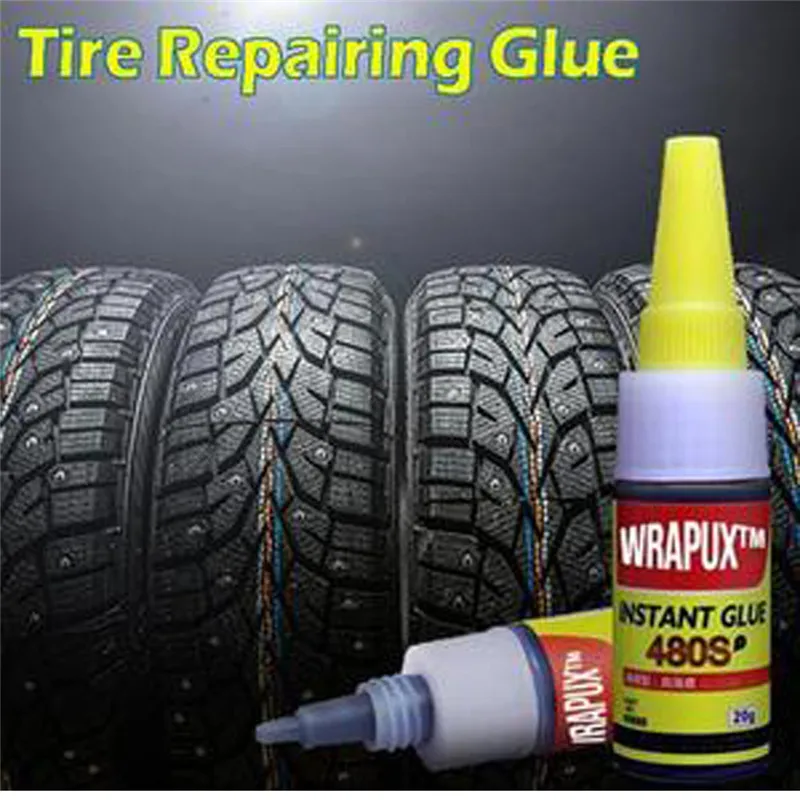
In general, damage limits depending on their location, size and speed category of the tire are given in special tables RemaTipTop, compiled according to the results of tests and tests.
When repairing with a cord, it is necessary use adhesiveFor example, regarding damage to the shoulder of a category Q tire (up to 160 km/h), repairs are allowed if the “injury” does not exceed a diameter of 8 mm. And damage to the sidewall can be repaired if it is no more than 35 mm long (along the side height) and up to 20 mm wide.
Second step: what kind of repair is needed? To get there - or capital? The fact is that the most common repair of a puncture with a cord is actually exclusively temporary - just to get to the station and overhaul the tire. And often the car owner asks to fix an expensive tire with a cord, which he puts on an expensive car - and stops there. And at the stations they “go forward” to him: they say, the consequences are at the expense of the customer . ..
..
But even with such a repair, some "masters" manage to cheat. The cord, before placing it in the puncture, is not even smeared with glue. There is a category of cords made of "raw" rubber (they are also called "snotty"). And it is mistakenly believed that glue is not needed for them. No - it's a must!
In addition, when repairing with a cord, it is necessary to form a hole with a burr to enter the repair material. And this is very often not done (on the principle - and so it will do!). For ten kilometers, maybe it will “get off” ...
Step three: puncture overhaul, after which the tire will reach its physical wear.
Fungi are installed at "vertical" punctures Here the choice of repair tactics depends on the location and area of damage. If the puncture axis runs perpendicular to the tread surface, then it is preferable to seal it with a fungus. If the puncture axis runs at an angle of more than 12 degrees from the surface, then a plug must be used.
Tire repair fungus is preferred, but if the puncture is at an angle, the fungus head will not be able to fit snugly against the inside of the tire. And over time it can come off - which, of course, is unacceptable.
In principle, all actions of the wizard when using both fungus and cork are the same. The puncture is drilled with a burr with a diameter of 3 mm or 6 mm. The repair area from the inside of the tire is processed with a roughening tool - this is done so that the glue applied to the fungus cap or patch (if cork is used) firmly adheres to the surface of the tire.
But this is followed by an outwardly simple but obligatory operation - the dust formed after drilling and roughening is carefully removed with a brass or coconut brush, and then vacuumed. Moreover, simple “blowing” or brushing with a rag is unacceptable!
Processing with a special solution - required! Then the repair area is smeared with glue (the Germans call it "cement" - that's what it says on the containers with it. In fact, this is a high-tech adhesive system) and a fungus or cork is introduced into the hole - from the inside of the tire! Moreover, until the moment of installation, it is impossible to remove the packaging from the fungus or cork - it can be easily removed when they are introduced into the hole to be sealed. After installing the cork, its excess is cut off - and the repair area is smeared with glue. A patch is applied on top.
Next, the fungus cap or plaster is rolled on. And it remains only to cut off the excess fungal stem or cork from the outside of the tire.
It is very important to use materials from only one company for temporary repairs with a cord and a major fungus or plug! The fact is that the adhesives themselves are spilled: there are those produced on the basis of hydrocarbons, and there are those based on trichlorethylene. In addition, adhesives from different companies, even on the same basis, differ in composition. And therefore, in case of confusion, a reliable connection will not work - at best, it will last for some time. But - a little time ...
But - a little time ...
Fourth step: overhaul of large damage. Let me remind you that damage that exceeds a puncture, but does not exceed the maximum allowable, is considered large. With such damage, the tire is only scrapped - it is no longer possible to achieve the necessary reliability.
The technology of such a repair is simple - but there are no "extra" steps and steps in it. Outside, the place of damage is cut "under the funnel" - part of the damaged rubber is removed, the remains of the cord. From the inside, the place under the patch sticker must be roughened.
The plaster is a high-tech articleThen the dust must be carefully removed after processing with a vacuum cleaner - and this operation must not be skipped!
Next, the “funnel” is treated with a special solution: in the case of using the “Tip Top” technology, this is “MTRThermopress”.
And filled with raw rubber of the same brand as on the tire - heated strips or a special extruder. Raw rubber is treated with the same solution. And immediately closed with insulating foil for subsequent vulcanization.
Raw rubber is treated with the same solution. And immediately closed with insulating foil for subsequent vulcanization.
Please note - do not skip a double treatment with mortar, nor cover the vulcanization site with foil!
A plaster is applied from the inside of the tire to the damaged area. And be sure to roll with a special rolling - this stage also cannot be skipped.
Something about Band-Aids: Don't try to save money by replacing your branded Band-Aid with the first piece of rubber you find! In fact, a patch is a rather complex rubber product reinforced with synthetic or steel threads that coincide with the direction of the tire cord threads.
Patches are produced separately for bias and radial tires. For their correct orientation (it is very important!) Arrows are applied on each of them, which are directed to the sides. You cannot cut the patch "to size" - it cannot be cut at all due to the complex internal construction of the cords. Companies produce several sizes of patches - and you need to choose from them using the Type Top damage table.
Naturally, the use of patches and adhesives with which they are glued, produced by different companies, is unacceptable - “cement” is applied to the surface of the patch, which needs to be smeared on the surface from the inside of the tire: only in this case the connection will be reliable and durable.
Step five: vulcanization. In order to vulcanize a “sandwich” of raw rubber, a tire and a plaster, it must be heated. But the problem is that vulcanizers, whose power allows you to warm up the entire volume of the repaired area, are expensive and consume a lot of electricity. In addition, they are bulky - the area of \u200b\u200bthe heating plate must exceed the size of any patch. So not every workshop can afford such a vulcanizer.
There is another solution - the so-called "two-stage" repair method. This is when a vulcanizer that is more affordable and consumes less electricity is only the site of damage.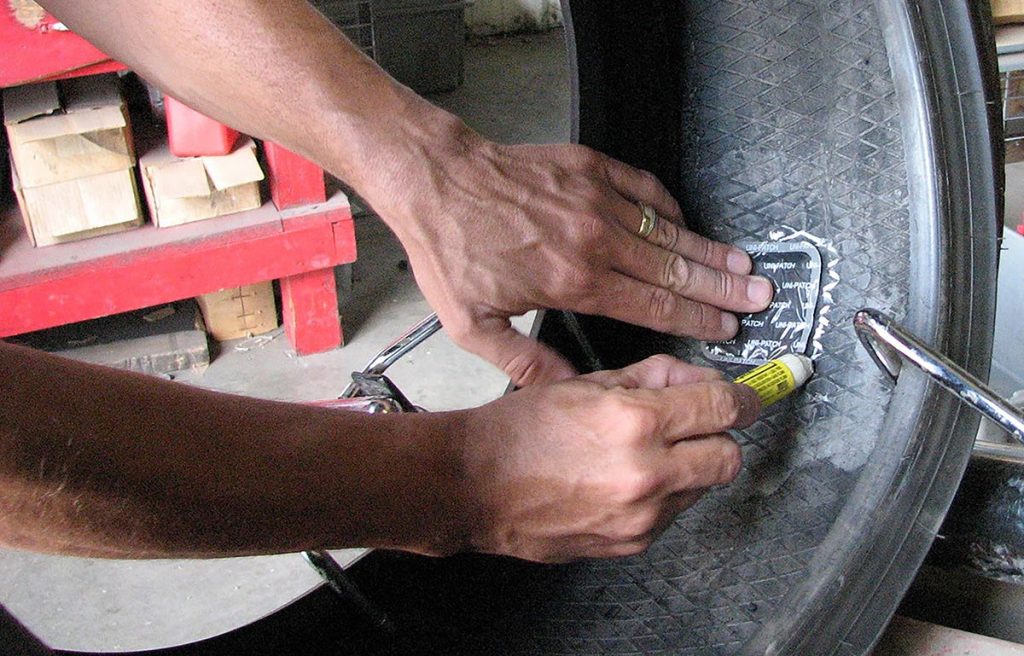 Its size is not enough to vulcanize the connection of the patch and the tire.
Its size is not enough to vulcanize the connection of the patch and the tire.
But it's okay - there is an effect called "cold vulcanization". Glue BL and the coating of the plaster from Tip Top are just capable of such a "cold" vulcanization.
However, if after a one-stage - “hot” - vulcanization, the tire can be mounted on wheels and installed on a car, then after a two-stage one (when only raw rubber warms up, and the patch is glued “cold”), you will have to wait at least 24 hours before mounting. It is these days that constitute the second stage - the time is required for the cold polymerization of the connecting layer to be completed.
So, to summarize, the “main secret of tire repair” is not in some particularly complex nuances of the technology - it is simple. The secret is in the accuracy and meticulousness of following simple instructions. In which, I repeat, there are no “extra” stages
tire service
| 1. Inspect the tire completely, inside and out, to determine its maintainability. The area to be inspected must have good lighting inside and outside the tire. | 2. If the damage is in the non-repairable zone A-B, then the tire cannot be repaired.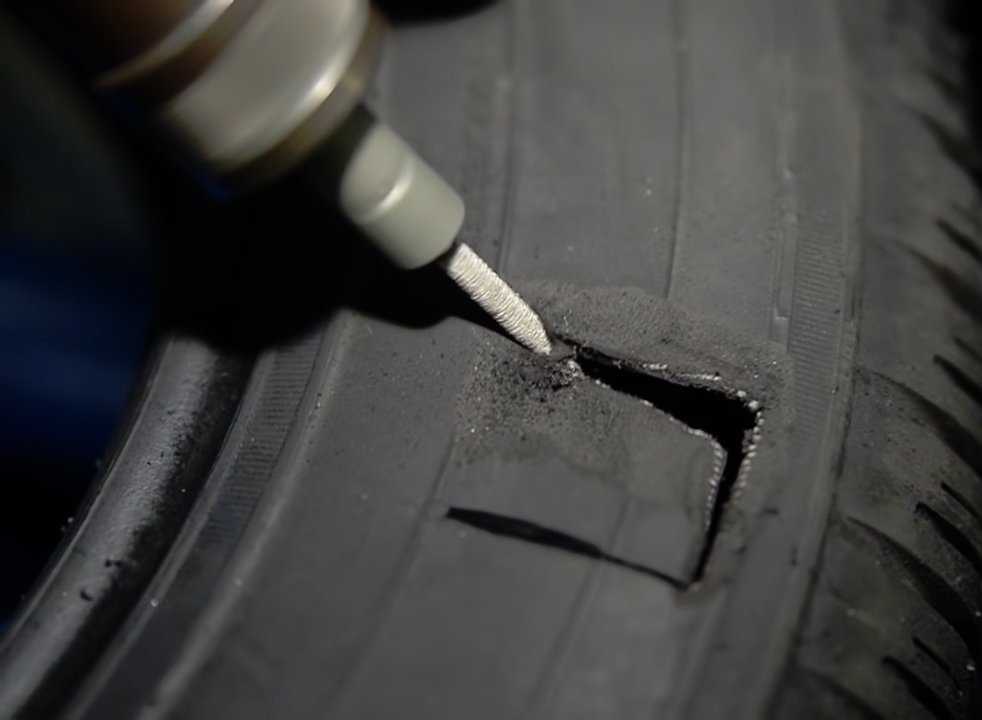 | 3. Mark chalk damage on the inside and outside of the tire. | 4. Remove damage object. |
| 5. To determine the size of the damage and possible delamination, examine the damage using a spiral Awl Tech #915 outside and inside the tire. | 6. From inside the tire, measure the area cord damage and refer to the BP Limitations Chart to determine maintainability. | 7. If the tire is repairable, process damage site using Tech Rub-O-Matic No. 704 degreaser. | 8. Currently under repair area is still damp, remove dirt with scraper TESN No. 933. |
9.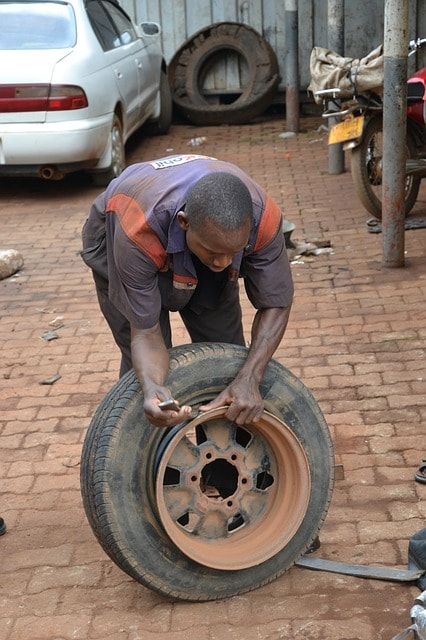 Using low speed drill (max 5000 rpm) No. S-1036, and spherical knife No. S-2045, S2046, remove the rubber in the damaged area. Attention: During the uninstallation process rubber in the area of damage, it is important not to damage the entire cord. Using low speed drill (max 5000 rpm) No. S-1036, and spherical knife No. S-2045, S2046, remove the rubber in the damaged area. Attention: During the uninstallation process rubber in the area of damage, it is important not to damage the entire cord. | 10. Using TECH knife nos. 940, 941 remove all damaged material from the damaged area tires. Attention: it is important not to damage the whole cords. | 11. Using abrasive pencil ( No. RH - 625 ) and a low speed drill, remove all irregularities along the edges of the damage. This will prevent the damage from growing after the repair. | 12. Slightly groove the tread for good grip on wet rubber, using a slow speed drill and an RH-625 abrasive pencil. |
13.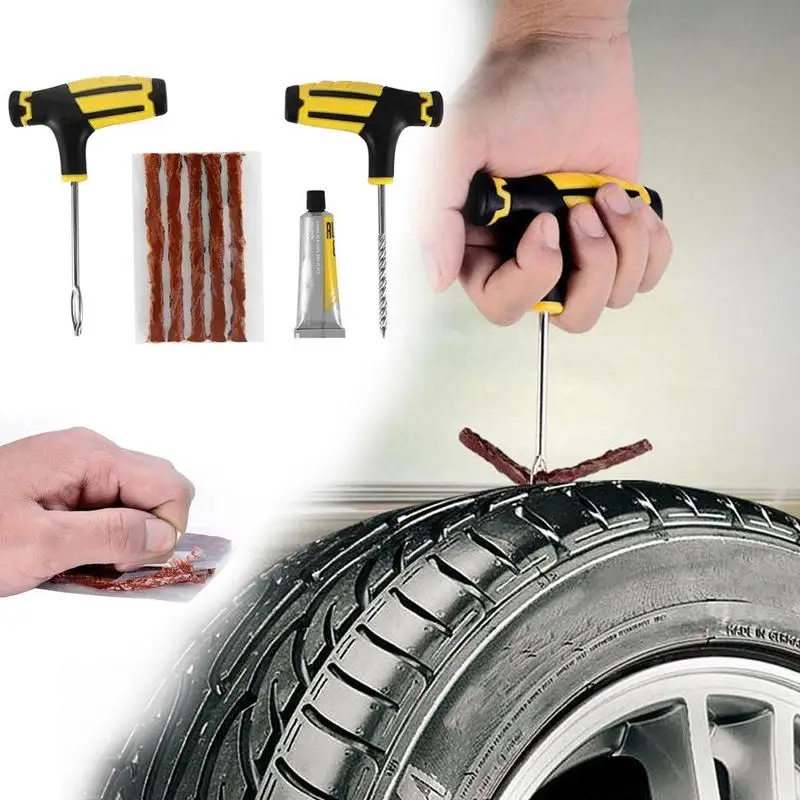 Treat the damaged area at an angle of 45° to the tread plane to give it the shape of a funnel. Take advantage abrasive ring No. RH-300, RH-308 and a low-speed drill. Treat the damaged area at an angle of 45° to the tread plane to give it the shape of a funnel. Take advantage abrasive ring No. RH-300, RH-308 and a low-speed drill. | 14. Same abrasive ring slightly clean the rubber around the perimeter of the damaged area at a distance of up to 40mm. | 15. Using an abrasive hemisphere No. RH-106 and a low-speed drill, clean out the damage from the inside of the tire. | 16. Measure the depth of damage at the thinnest point. Mark it on the tire. |
| 17. Do not measure overall cut damage, measure only the size of the through damage. Determine the tire ply rating. | 18. guided by the BP Chart. | 19.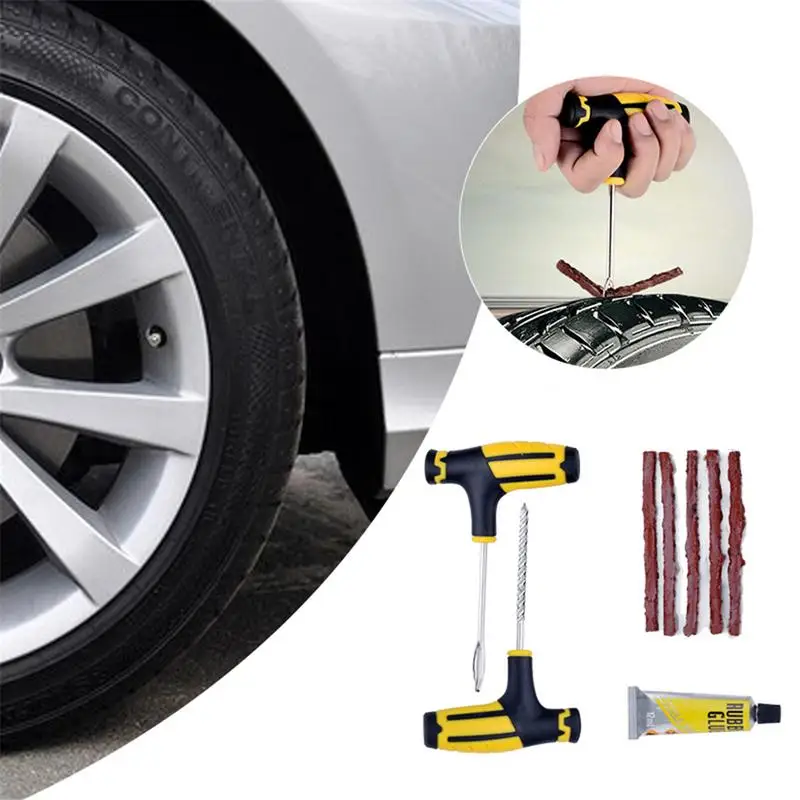 Write the size of the selected patch on the tire. Write the size of the selected patch on the tire. | 20. Outside and inside vacuum cleaner clean the repaired surface from crumb rubber. |
| 21. For correct placement tires in the vulcanizer, mark the damage with two perpendicular lines, intersecting at the center of the injury. | 22. Treat repair area outside and inside the tire using TECH Rub-O-Matic No. 704 degreaser and lint-free fabric. Let the surface dry completely. | 23. Apply cement Tech #760 or TECH Temvulc #1082 over the entire sanded area and let dry 3-5 min. | 24. On the inside of the tire apply a blank of raw rubber TESN No. 850 with overlapping of the edges of the damage by 25mm. |
25.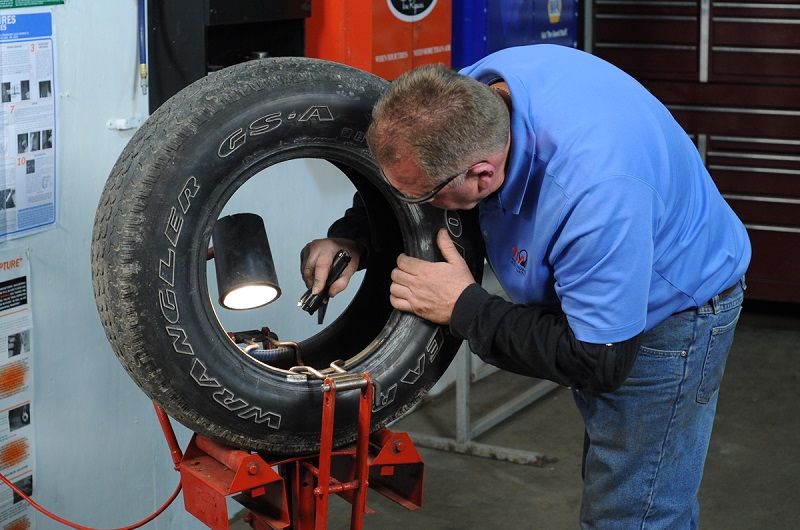 Cut into several strips raw rubber TESN No. 850 and heat them up to a temperature of 49-55 ° C. Cut into several strips raw rubber TESN No. 850 and heat them up to a temperature of 49-55 ° C. | 26. Press the workpiece with your finger to the tire. | 27. Roll the workpiece using rolling TESN No. 936. | 28. On the outside of the tire, put fabric threads inside the damage, fixing their ends at a distance at least 75mm from the edges of the damage. |
| 29. awl TESN No. 986 fill the damage with prepared strips of raw rubber, evenly laying strip after strip, without allowing air to enter between layers. | 30. Complete filling process damage with the help of rolling TESN No. 936. | 31. strips of raw rubber so that it protrudes from the outer surface of the tire by 3-6mm. | 32. Tread grooves adjacent to the welding zone, fill with rubber inserts to prevent leakage they contain raw rubber when vulcanized. |
| 33. Remove the protective film from blanks. | 34. Determine the time required for vulcanization of damage, at the rate of 10 minutes for each 3mm of thickness rubber, preheating the vulcanizer to operating temperature. | 35. Place the tire in the vulcanizer. | 36. Attach air clamps vulcanizer to the air line with a pressure of not more than 35 p.s.i. At using a manual (not pneumatic) vulcanizer, it is necessary to tighten clamp every 5-10 minutes. |
37.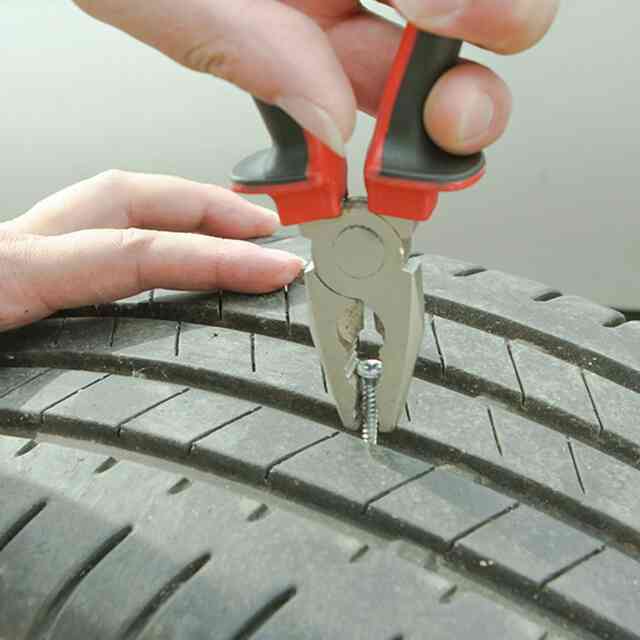 After curing remove the vulcanizer and allow the tire to cool. After curing remove the vulcanizer and allow the tire to cool. | 38. Guided by markings apply the pre-selected plaster and mark the stripping area by 25mm larger than the patch. | 39. Pre-treat marked area using Tech Rub-O-Matic No. 704 degreaser. | 40. While the surface is still damp, remove dirt with a TESN #933 scraper. |
| 41. Using low speed drill (max 5000 rpm) and abrasive hemisphere RH-106, roughen the marked area, removing all irregularities. (Be sure to use protective goggles). | 42. Use a vacuum cleaner to remove the rubber crumb. | 43. Treat marked area using Tech Rub -O-Matic #704 degreaser from center to edges. Give dry for 3-4 minutes. Give dry for 3-4 minutes. | 44. Apply #760 cement all over surface of the treated area. Let dry for 3-5 minutes. (At repeat twice for tube tires.) |
| 45. Peel off the blue protective film from the selected patch, leaving it around the edges. It is important not to touch the gray layer by hand. | 46. Center the patch damage, guided by the markup. Warning: arrow on patch should point towards the tire rim. Press the patch against treated surface. | 47. roll the patch over the entire surface from the center to the edges. | 48. Remove the entire blue protective film and roll the edges of the patch. |
49. |